Trending News
17 October, 2024
11.71°C New York

We’re at a transitional moment in streaming — user growth is slowing and major players are looking to consolidate, but the long-promised dream of profitability finally seems within reach (especially if you’re Netflix).
This is the perfect time, then, for The New York Times to interview many of the industry’s big names — including Netflix co-CEO Ted Sarandos, Amazon’s Prime Video head Mike Hopkins, and IAC chairman Barry Diller — about what they think comes next.
There seemed to be broad agreement on most of the big themes: More ads, higher prices, and fewer big swings on prestige TV. These changes are all united by the shift toward profitability, rather than growth-at-all-costs. If the initial prices of many streaming services seemed unsustainably low at launch, it turns out they were — prices have been steadily rising, while the streamers have also introduced more affordable subscription tiers for viewers who are willing to watch ads.
In fact, some execs told The Times that streamers will keep raising prices for the ad-free tiers with the aim of pushing more customers to sign up for ad-supported subscriptions instead.
The growth of ad-supported streaming could also affect the kinds of movies and shows that get produced, since advertisers generally want to reach a mass audience — think of the heyday of ad-supported network TV, with its endless shows about doctors and cops, compared to the more ambitious fare on subscription-supported HBO.
That shift is already underway in streaming, though executives insist they’re not abandoning their hopes of finding the next “Sopranos” or “House of Cards.” Sarandos (who’s already been backing away from his decade-old boast that he wanted Netflix “to become HBO before HBO could become us”) said Netflix can “do prestige TV at scale,” but added, “We don’t only do prestige.”
Similarly, Hopkins said that at Prime Video, “procedurals and other tried-and-true formats do well for us, but we also need big swings that have customers saying, ‘Wow, I can’t believe that just happened’ and will have people telling their friends.’”
Other not-too-surprising predictions include greater investment in live sports (“the simplest and most interesting thing,” according to Warner Bros. Discovery board member John Malone), more bundling, and either the shutdown or merger of some existing services. Apparently there was consensus among the executives that streamers need at least 200 million subscribers to be “big enough to compete,” as former Disney CEO Bob Chapek put it.
Some of those changes would be welcome, but they reinforce the sense that streaming — at least as envisioned by the executives currently running the business — won’t be all that different from the old cable TV ecosystem. Some things will be better (on-demand viewing), some will be worse (compensation for writers, actors, and other talent), and there might be different players at the top. But in many ways, it will feel like the same old TV.

Proponents of nuclear fusion have long promised to create nearly limitless power here on earth by harnessing the same reaction that powers the sun. Today, fusion’s biggest hurdle is ensuring that any fusion power plant produces more power than it needs to operate. The second is ensuring that it has enough fuel to run.
Many fusion reactors are designed to run on a mix of two isotopes of hydrogen, deuterium and tritium. (Common hydrogen atoms have no neutrons; deuterium atoms have one, and tritium have two.) There’s plenty of deuterium, which can be found in seawater, but not nearly enough tritium, which is so rare that it essentially has to be manufactured.
“There’s only 20 kilograms of tritium anywhere in the world right now,” Kyle Schiller, CEO of Marathon Fusion, told TechCrunch. A single commercial-scale power plant will require a few kilograms just to start up, meaning the world has enough tritium for a dozen at most. His startup, which has been operating stealthily, thinks it has a solution to that problem.
Today, the world’s tritium supply is a waste byproduct of a small number of nuclear plants running on fission, the type of nuclear power that has been harnessed for energy since the middle of the 20th century. Assuming that scientists can harness nuclear fusion to create viable power on earth, the first fusion plants will use this supply. Future reactors will depend on the first crop of fusion power plants, which will be designed to generate additional fuel.
“Deployment of fusion devices is this doubling process,” said Adam Rutkowski, Marathon’s CTO. “You’re breeding enough tritium to maintain the steady state consumption by the device, but you also need to breed excess tritium to start up the next reactor.”
That breeding will take place when neutrons unleashed during fusion strike a blanket of lithium. The impact will release helium and tritium, and those products will then be routed out of the reactor core where they can be filtered. Some of the tritium will be injected back into the reactor, while another portion will be reserved as fuel for other reactors.
There’s existing equipment for the task, but it’s only useful for experimental work. It’s efficient and effective, but because experimental reactors run for short periods, it doesn’t have the throughput needed for a commercial power plant. To get to that point, the filtration systems will need “a few orders of magnitude improvement,” Schiller said.
That’s where Marathon hopes to come in. It’s working to refine a 40-year-old technology known as superpermeation that uses solid metal to filter impurities from hydrogen.
It works something like this: The hydrogen and other stuff that needs to be filtered out is first turned into a plasma, though not one as hot as inside the reactor. The mix is then pressed up against the metal membrane, which allows hydrogen (including tritium) to pass through while blocking everything else. The effect, known as superpermeation, also compresses the hydrogen, giving it the pressure needed to flow through the fuel injection systems.
“The whole idea here is just getting maximal throughput as fast as possible,” Rutkowski said.
Rutkowski and Schiller have been working on the problem for a couple of years now, receiving early support from the Department of Energy’s ARPA-E program and the Breakthrough Energy Fellows program. Recently, Marathon raised a $5.9 million seed round, the company exclusively told TechCrunch. The round was led by the 1517 Fund and Anglo American with participation from Übermorgen Ventures, Shared Future Fund and Malcolm Handley.
Marathon said it has letters of intent from both Commonwealth Fusion Systems and Helion Energy, two fusion startups which have raised $2 billion and $607 million, respectively.
Given that commercial fusion power is still years away — if it’s even possible — Marathon’s bet might seem a bit early. After all, only one fusion experiment has hit breakeven in the scientific sense, which discounts the facility’s overhead, something a commercial power plant can’t do.
Schiller disagrees that his company is too far ahead of the curve. “We’ve been pretty continuously surprised over the last decade or so just how fast progress [with fusion] has gone,” he said. “I really think that if we wake up one morning and get to breakeven, we’re going to wish we had started even sooner.”
Update: Added details to further explain superpermeation.

We’re at a transitional moment in streaming — user growth is slowing and major players are looking to consolidate, but the long-promised dream of profitability finally seems within reach (especially if you’re Netflix).
This is the perfect time, then, for The New York Times to interview many of the industry’s big names — including Netflix co-CEO Ted Sarandos, Amazon’s Prime Video head Mike Hopkins, and IAC chairman Barry Diller — about what they think comes next.
There seemed to be broad agreement on most of the big themes: More ads, higher prices, and fewer big swings on prestige TV. These changes are all united by the shift toward profitability, rather than growth-at-all-costs. If the initial prices of many streaming services seemed unsustainably low at launch, it turns out they were — prices have been steadily rising, while the streamers have also introduced more affordable subscription tiers for viewers who are willing to watch ads.
In fact, some execs told The Times that streamers will keep raising prices for the ad-free tiers with the aim of pushing more customers to sign up for ad-supported subscriptions instead.
The growth of ad-supported streaming could also affect the kinds of movies and shows that get produced, since advertisers generally want to reach a mass audience — think of the heyday of ad-supported network TV, with its endless shows about doctors and cops, compared to the more ambitious fare on subscription-supported HBO.
That shift is already underway in streaming, though executives insist they’re not abandoning their hopes of finding the next “Sopranos” or “House of Cards.” Sarandos (who’s already been backing away from his decade-old boast that he wanted Netflix “to become HBO before HBO could become us”) said Netflix can “do prestige TV at scale,” but added, “We don’t only do prestige.”
Similarly, Hopkins said that at Prime Video, “procedurals and other tried-and-true formats do well for us, but we also need big swings that have customers saying, ‘Wow, I can’t believe that just happened’ and will have people telling their friends.’”
Other not-too-surprising predictions include greater investment in live sports (“the simplest and most interesting thing,” according to Warner Bros. Discovery board member John Malone), more bundling, and either the shutdown or merger of some existing services. Apparently there was consensus among the executives that streamers need at least 200 million subscribers to be “big enough to compete,” as former Disney CEO Bob Chapek put it.
Some of those changes would be welcome, but they reinforce the sense that streaming — at least as envisioned by the executives currently running the business — won’t be all that different from the old cable TV ecosystem. Some things will be better (on-demand viewing), some will be worse (compensation for writers, actors, and other talent), and there might be different players at the top. But in many ways, it will feel like the same old TV.

Proponents of nuclear fusion have long promised to create nearly limitless power here on earth by harnessing the same reaction that powers the sun. Today, fusion’s biggest hurdle is ensuring that any fusion power plant produces more power than it needs to operate. The second is ensuring that it has enough fuel to run.
Many fusion reactors are designed to run on a mix of two isotopes of hydrogen, deuterium and tritium. (Common hydrogen atoms have no neutrons; deuterium atoms have one, and tritium have two.) There’s plenty of deuterium, which can be found in seawater, but not nearly enough tritium, which is so rare that it essentially has to be manufactured.
“There’s only 20 kilograms of tritium anywhere in the world right now,” Kyle Schiller, CEO of Marathon Fusion, told TechCrunch. A single commercial-scale power plant will require a few kilograms just to start up, meaning the world has enough tritium for a dozen at most. His startup, which has been operating stealthily, thinks it has a solution to that problem.
Today, the world’s tritium supply is a waste byproduct of a small number of nuclear plants running on fission, the type of nuclear power that has been harnessed for energy since the middle of the 20th century. Assuming that scientists can harness nuclear fusion to create viable power on earth, the first fusion plants will use this supply. Future reactors will depend on the first crop of fusion power plants, which will be designed to generate additional fuel.
“Deployment of fusion devices is this doubling process,” said Adam Rutkowski, Marathon’s CTO. “You’re breeding enough tritium to maintain the steady state consumption by the device, but you also need to breed excess tritium to start up the next reactor.”
That breeding will take place when neutrons unleashed during fusion strike a blanket of lithium. The impact will release helium and tritium, and those products will then be routed out of the reactor core where they can be filtered. Some of the tritium will be injected back into the reactor, while another portion will be reserved as fuel for other reactors.
There’s existing equipment for the task, but it’s only useful for experimental work. It’s efficient and effective, but because experimental reactors run for short periods, it doesn’t have the throughput needed for a commercial power plant. To get to that point, the filtration systems will need “a few orders of magnitude improvement,” Schiller said.
That’s where Marathon hopes to come in. It’s working to refine a 40-year-old technology known as superpermeation that uses solid metal to filter impurities from hydrogen.
It works something like this: The hydrogen and other stuff that needs to be filtered out is first turned into a plasma, though not one as hot as inside the reactor. The mix is then pressed up against the metal membrane, which allows hydrogen (including tritium) to pass through while blocking everything else. The effect, known as superpermeation, also compresses the hydrogen, giving it the pressure needed to flow through the fuel injection systems.
“The whole idea here is just getting maximal throughput as fast as possible,” Rutkowski said.
Rutkowski and Schiller have been working on the problem for a couple of years now, receiving early support from the Department of Energy’s ARPA-E program and the Breakthrough Energy Fellows program. Recently, Marathon raised a $5.9 million seed round, the company exclusively told TechCrunch. The round was led by the 1517 Fund and Anglo American with participation from Übermorgen Ventures, Shared Future Fund and Malcolm Handley.
Marathon said it has letters of intent from both Commonwealth Fusion Systems and Helion Energy, two fusion startups which have raised $2 billion and $607 million, respectively.
Given that commercial fusion power is still years away — if it’s even possible — Marathon’s bet might seem a bit early. After all, only one fusion experiment has hit breakeven in the scientific sense, which discounts the facility’s overhead, something a commercial power plant can’t do.
Schiller disagrees that his company is too far ahead of the curve. “We’ve been pretty continuously surprised over the last decade or so just how fast progress [with fusion] has gone,” he said. “I really think that if we wake up one morning and get to breakeven, we’re going to wish we had started even sooner.”
Update: Added details to further explain superpermeation.

We’re at a transitional moment in streaming — user growth is slowing and major players are looking to consolidate, but the long-promised dream of profitability finally seems within reach (especially if you’re Netflix).
The perfect time, then, for The New York Times to interview many of the industry’s big names — including Netflix co-CEO Ted Sarandos, Amazon’s Prime Video head Mike Hopkins, and IAC chairman Barry Diller — about what they think comes next.
There seemed to be broad agreement on most of the big themes: More ads, higher prices, and fewer big swings on prestige TV. These changes are all united by the shift towards profitability, rather than growth-at-all-costs. If the initial prices of many streaming services seemed unsustainably low at launch, it turns out they were — prices have been steadily rising, while the streamers have also introduced more affordable subscription tiers for viewers who are willing to watch ads.
In fact, some execs told The Times that streamers will keep raising prices for the ad-free tiers with the aim of pushing more customers to sign up for ad-supported subscriptions instead.
The growth of ad-supported streaming could also affect the kinds of movies and shows that get produced, since advertisers generally want to reach a mass audience — think of the heyday of ad-supported network TV, with its endless shows about doctors and cops, compared to the more ambitious fare on subscription-supported HBO.
That shift is already underway in streaming, though executives insist they’re not abandoning their hopes of finding the next “Sopranos” or “House of Cards.” Sarandos (who’s already been backing away from his decade-old boast that he wanted Netflix “to become HBO before HBO could become us”) said Netflix can “do prestige TV at scale,” but added, “We don’t only do prestige.”
Similarly, Hopkins said that at Prime Video, “procedurals and other tried and true formats do well for us, but we also need big swings that have customers saying ‘Wow, I can’t believe that just happened’ and will have people telling their friends.’”
Other not-too-surprising predictions include greater investment in live sports (“the simplest and most interesting thing,” according to Warner Bros. Discovery board member John Malone), more bundling, and either the shutdown or merger of some existing services. Apparently there was consensus among the executives that streamers need at least 200 million subscribers to be “big enough to compete,” as former Disney CEO Bob Chapek put it.
Some of those changes would be welcome, but they reinforce the sense that streaming — at least as envisioned by the executives currently running the business — won’t be all that different from the old cable TV ecosystem. Some things will be better (on-demand viewing), some will be worse (compensation for writers, actors, and other talent), and there might be different players at the top. But in many ways, it will feel like the same old TV.

Honda is dunking on the “thick, heavy” electric vehicle trend in an attempt to build buzz around its upcoming 0 series EVs.
At CES 2024, the automaker teased two concept vehicles, the Saloon and Space-Hub, and said the first commercial model in its 0 series EV lineup will launch in North America in 2026.
Honda’s first 0 series model is apparently “based on” the Saloon concept — a low-slung, roomy yet sporty EV that looks a little like a CGI set piece from a Blade Runner sequel.
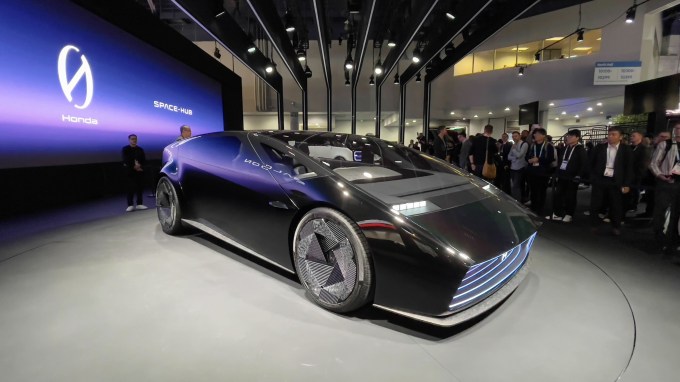
The van-like Space-Hub, meanwhile, seems a bit less dystopic and more family-focused at first blush. My colleague Alex Wilhelm likened it to a “weird fish bowl” in TechCrunch Slack.
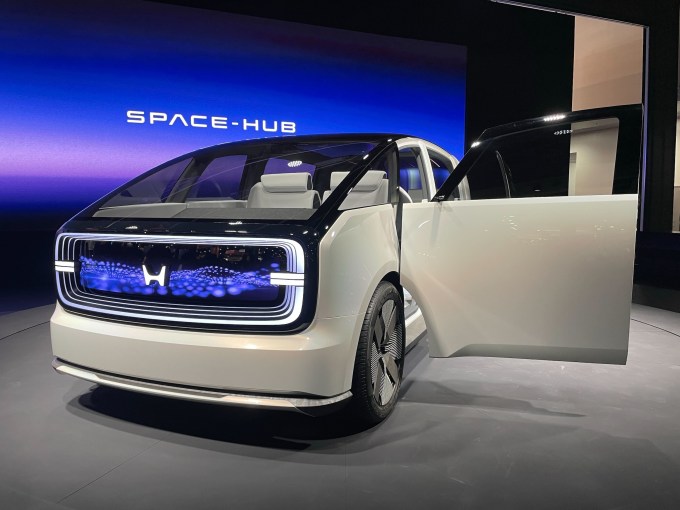
Honda exec Shinji Aoyama boasted in a statement that these concepts are “overwhelmingly different from other EVs,” but that’s typical of concepts; by the time vehicles commercially launch, practicality and mass-market appeal typically win out over aesthetic exploration.
In other words, don’t hold your breath for headrests that double as touchscreen displays.

Honda’s announcement included a dig at the maximalist approach electric-vehicle makers have taken lately. “The mobility we dream of is not an extension of the trend of ‘thick, heavy, but smart’ EVs,” global CEO Toshihiro Mibe said in a statement. “We will create a completely new value from zero based on thin, light and wise as the foundation for our new Honda 0 EV series,” he added. Electric vehicles are getting dangerously heavy, a trend that threatens the lives of pedestrians and demands larger batteries and more energy to compensate for vehicle weight. Honda didn’t go into specifics about the first 0 series models; for now, all we have are these brief comments. (But if the company wants to prioritize relatively light vehicles, then why did it kill the Honda e?)
The Saloon features “sustainable materials […] throughout the exterior and interior,” according to Honda’s press release. Yet, Honda didn’t say which materials it used when TechCrunch asked for details. Honda also didn’t specify if it plans to use such materials when it commercially launches its first 0 series electric vehicles.

Honda has lagged in the switch to electrics, and it recently called it quits on a plan to co-develop “affordable” electric vehicles with GM. Though Honda plans to launch an electric Prologue this year, the automaker intends to launch 30 EVs by 2030. That’s why the 0 series launch will be a big moment for Honda. It’s not much to go on, but it’s still our closest look yet at Honda’s electrified future.
Say hello to the Honda 0 series EVs 🚗 The Saloon and Space-Hub concept models made their debut at #CES2024, along with a new H logo. What do you think of their futuristic designs? pic.twitter.com/sBaQC1UAcj
— TechCrunch (@TechCrunch) January 9, 2024


Honda is dunking on the “thick, heavy” electric vehicle trend in an attempt to build buzz around its upcoming 0 series EVs.
At CES 2024, the automaker teased two concept vehicles, the Saloon and Space-Hub, and said the first commercial model in its 0 series EV lineup will launch in North America in 2026.
Honda’s first 0 series model is apparently “based on” the Saloon concept — a low-slung, roomy yet sporty EV that looks a little like a CGI set piece from a Blade Runner sequel.

The van-like Space-Hub, meanwhile, seems a bit less dystopic and more family-focused at first blush. My colleague Alex Wilhelm likened it to a “weird fish bowl” in TechCrunch Slack.

Honda exec Shinji Aoyama boasted in a statement that these concepts are “overwhelmingly different from other EVs,” but that’s typical of concepts; by the time vehicles commercially launch, practicality and mass-market appeal typically win out over aesthetic exploration.
In other words, don’t hold your breath for headrests that double as touchscreen displays.

Honda’s announcement included a dig at the maximalist approach electric-vehicle makers have taken lately. “The mobility we dream of is not an extension of the trend of ‘thick, heavy, but smart’ EVs,” global CEO Toshihiro Mibe said in a statement. “We will create a completely new value from zero based on thin, light and wise as the foundation for our new Honda 0 EV series,” he added. Electric vehicles are getting dangerously heavy, a trend that threatens the lives of pedestrians and demands larger batteries and more energy to compensate for vehicle weight. Honda didn’t go into specifics about the first 0 series models; for now, all we have are these brief comments. (But if the company wants to prioritize relatively light vehicles, then why did it kill the Honda e?)
The Saloon features “sustainable materials […] throughout the exterior and interior,” according to Honda’s press release. Yet, Honda didn’t say which materials it used when TechCrunch asked for details. Honda also didn’t specify if it plans to use such materials when it commercially launches its first 0 series electric vehicles.

Honda has lagged in the switch to electrics, and it recently called it quits on a plan to co-develop “affordable” electric vehicles with GM. Though Honda plans to launch an electric Prologue this year, the automaker intends to launch 30 EVs by 2030. That’s why the 0 series launch will be a big moment for Honda. It’s not much to go on, but it’s still our closest look yet at Honda’s electrified future.
Say hello to the Honda 0 series EVs 🚗 The Saloon and Space-Hub concept models made their debut at #CES2024, along with a new H logo. What do you think of their futuristic designs? pic.twitter.com/sBaQC1UAcj
— TechCrunch (@TechCrunch) January 9, 2024

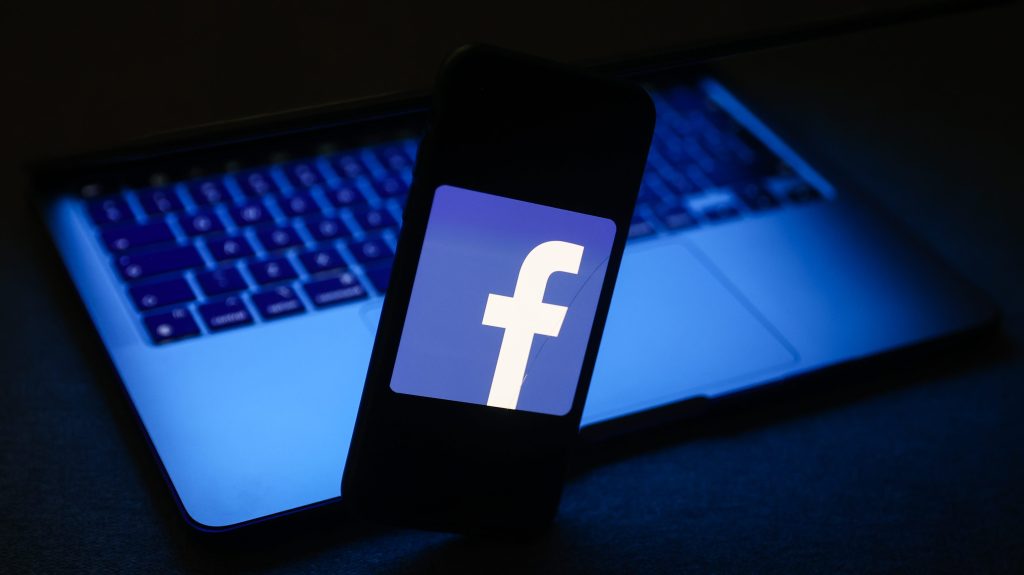
A coalition of more than two dozen digital and democratic rights groups, NGOs and not-for-profits, including noyb and Wikimedia Europe, have written to the European Union’s regulatory body for data protection urging it to reject a tactic that’s been controversially seized upon by Meta in its latest bid to circumvent the bloc’s privacy laws.
If the European Data Protection Board (EDPB) fails to move against so-called “consent or pay” approaches to processing citizens’ personal data it will create a fatal loophole in the bloc’s flagship data protection regime that could gut people’s privacy rights and reshape the web for the worse, the organizations warn. (See the base of this post for a full list of the signatories to the letter.)
Last year in the EU Meta switched to claiming it would gather regional users’ consent to track and profile them to run its microtargeting ads business — following successful challenges, under the bloc’s General Data Protection Regulation (GDPR), against the legal bases it had previously claimed for the same purpose (first performance of a contract; then legitimate interest). But Meta’s version of consent offers users a Hobson’s choice — of paying at least €9.99/month for an ad-free subscription (per each account they have on Facebook and Instagram); or agreeing to its tracking.
No other choices are available, despite the GDPR stipulating that for consent to be a valid legal basis for processing people’s information it must be freely given. (Meta seems to be playing on ‘free’ in a monetary sense here; but the law actually requires that users feel free to consent or not consent… which is basically the opposite of the costly scenario the adtech giant has concocted that puts a literal premium on privacy.)
The NGOs are dubbing this tactic “pay or okay”. And the concerns they’re raising with the EDPB have been aired by noyb for several years, including — most recently — in two GDPR complaints filed with data protection authorities (DPAs) last year which are challenging Meta’s approach as unlawful.
The privacy rights group has actually been fighting consent or pay (or pay or okay) for years — bringing a raft of earlier challenges against a number of European news publishers which devised the tactic to extract consent from their own users by putting their journalism behind a cookie paywall that demands readers accept tracking or cough up for a subscription. And, in some cases, news publishers have gained, if not full-throated approval from their local data protection authorities, then the equivalent of a wink and a nod and been allowed to carry on. So more of these cookie paywalls have been popping up on news sites around the region.
However Meta is not in the journalism business. Indeed, it typically denies it’s a publisher — saying it’s just an intermediary (platform) connecting users. Yet it’s now appropriating the same tactic as the publishers. (And, indeed, it may not be the only adtech giant to sniff the chance of a privacy-crushing tracking victory here — see, for example, TikTok’s international test of an ad-free subscription last year. )
The coalition of democratic and digital rights — and pro-access-to-information — groups are getting involved in this now because, earlier this month, a trio of DPAs (Norway’s, the Netherlands and the Hamburg authority) wrote to the EDPB asking for it to weigh in on the controversial tactic. (Possibly as a strategy to avoid Ireland’s DPA setting the de facto weather here as, under the GDPR’s one-stop-shop, it’s Meta’s lead oversight authority and has been reviewing its consent mechanism since last summer but has yet to pronounce a view on whether or not it complies with the law.)
The Board’s role in this regulatory patchwork is to work towards harmonizing (as much as possible) the application of the GDPR by the DPAs, including by producing opinions and guidance on how the law should be interpreted. Given that steering body function, one may argue the EDPB should have been rather more proactive in responding to the rise (and creep) of ‘pay or okay’. But, in the event, its hand has finally been forced by the three members’ request this month to opine on whether ‘pay or okay’ is okay (or nay).
Blogging about the request earlier this month, the Norwegian DPA warned the issue is a “huge fork in the road” for privacy rights in Europe. “Is data protection a fundamental right for everyone, or is it a luxury reserved for the wealthy? The answer will shape the internet for years to come,” wrote Tobias Judin, the authority’s international head.
Asked about this last week, a spokeswoman for the EDPB told TechCrunch: “We can confirm that we have received a request for an Art. 64 (2) Opinion on the topic of Consent or Pay. This will be an opinion on a matter of general application, in line with the requirements set out in Art. 64 GDPR.”
She added that the opinion would “look into the general concept of Consent or Pay”; and “will not look into any specific companies” — but declined to provide any further information, noting: “We cannot comment on the progress of ongoing files.”
The EDPB has eight weeks to adopt an opinion — starting from January 25 (when it received the DPAs’ request). But as the Norwegian authority notes this deadline may be extended by a further six weeks (“if necessary”). Which means the Board should be weighing in with a view on how the law on consent applies in this context either by late March or early May at the latest. So there’s a relatively short window before guidance on a very contentious issue drops that could significantly impact companies with surveillance business models like Meta’s — and the regional internet.
“We are highly concerned about this vote and we urge the EDPB to issue a decision on the subject that aligns with the Fundamental Right to Data Protection,” write the NGOs in their letter to the Board. “When ‘pay or okay’ is permitted, data subjects typically lose the ‘genuine or free choice’ to accept or reject the processing of their personal data, which was a cornerstone of the GDPR reform and repeatedly upheld by the CJEU, also in C-252/21 Bundeskartellamt [aka Germany’s Federal Cartel Office’s (FCO) case against Meta’s ‘exploitative abuse’ of users’ data].
“With ‘pay or okay’ any website, app, or other consumer-facing company can simply put a price tag on any ‘reject’ option, ensuring that the vast majority of data subjects must accept the use, sharing, or selling of personal data – or pay a fee that can be more than 100x more expensive than the revenue generated by the use of personal data.”
In the letter the NGOs also argue that ‘pay or okay’ has failed to sustain the business models of the struggling news industry which first deployed it — suggesting: “The profits stay with large advertising networks and big tech platforms that heavily rely on a surveillance business model.”
“If ‘pay or okay’ is permitted, it will not be limited to news pages or social networks but will be employed by any industry sector with an ability to monetise personal data via consent,” they go on to warn. “The GDPR does not provide for a different treatment per industry sector. In practice, this would successfully undermine the GDPR, the high European data protection standard and wash away all realistic protections against surveillance capitalism.”
The letter also raises allegations that Meta has been lobbying individual DPAs to support pay or okay in votes that will inform the Board’s opinion.
A vote of Board members will be taken to determine the position adopted in the opinion, with each EU Member State getting one vote via a representative DPA on the body. The EDPB aims for consensus in its official positions but only a simple majority is needed. And it’s not clear whether most member DPAs oppose — or indeed support — ‘pay or okay’. So it’s hard to predict which way the vote will go, hence the NGOs’ concern. (We’ve previously delved into some of the views DPAs have themselves published on consent or pay here.)
“We… urge the EDPB and all SAs [supervisory authorities] to firmly oppose ‘pay or okay’ to prevent creating a substantial loophole in the GDPR,” the organizations write. “The EDPB’s opinion will shape the future of data protection and the internet for years to come. It is of utmost importance that the opinion truly ensures data subjects a ‘genuine and free choice’ regarding the processing of their personal data.”
While the Board’s guidance will be important in steering how the GDPR is applied in this area in the coming months it may not be the final world on the legal bounds of consent. Rather the EU’s top court, the Court of Justice (CJEU), is likely to be asked to weigh in to set definitive limits on the issue.
The Court has already tossed the proverbial cat among the pigeons on consent or pay after — last summer — it made passing mention in a referral related to the aforementioned German FCO’s case challenging Meta’s collection of data that allowed for the possibility, “if necessary”, of an “appropriate fee” being charged for access to an equivalent alternative service that lacks tracking and profiling.
“Necessary” and “appropriate” are major caveats but Meta quickly seized on the line to justify its ‘consent or pay’ rollout. Whereas noyb dismissed the mention as a mere orbiter dictum — and continues to suggest a future referral asking the CJEU to determine exactly where (and how) the consent line lies will be the final word here.
However, any referral to the bloc’s top court is likely to take years to deliver a verdict. And the Board’s opinion will stand on its own in the meanwhile — shaping developments on a contentious and impactful issue, for both web users (wanting privacy) and adtech giants (wanting people’s data), for the foreseeable future. So, again, that’s why rights watchers are nervous.
The stakes are certainly high: For Europeans’ privacy rights; for the prospect of the bloc showing it can — finally — enforce its own laws and defend fundamental rights from privacy-hostile Big Tech business models; and for tech giants like Meta trying to force their mass surveillance microtargeting ad businesses onto unwilling users by making the only alternative an unobtainable luxury and framing a ‘choice’ where they always win.
As a spokesman for noyb suggests, an EDPB opinion “in favor of Big Tech” could allow the controversial ‘pay or okay’ model to spread further and get entrenched, shuttering the possibility of better — pro-user and pro-information — business models taking the place of the data industrial tracking complex that lurks behind so much of today’s antisocial media and online toxicity.
The letter also warns Board approval for consent or pay could see it creep into other industries — where it would further impact web users’ ability to freely access information without having their activity and interests watched and recorded, and their attention sliced, stickered and sold for commercial gain.
If the last five+ years of GDPR enforcement have demonstrated anything it’s that trying to unpick online wrongs once they’re baked in is a battle that’s almost impossible to win. All eyes will therefore be on the EDPB’s move. The opinion it produces in the coming weeks could cement all these past failings — and lead to the champagne corks popping in Meta’s Dublin HQ. Or — just possibly — it could lay a path out of years of privacy rights stalemate.
Here’s the full list of NGOs signing the letter to the EDPB:
ApTI – Association for Technology and Internet, RomaniaBits of FreedomCorporate Europe Observatory (CEO)The Daphne Caruana Galizia FoundationDefend DemocracyDFRI – Föreningen för digitala fri- och rättigheterDigital Rights IrelandDržavljan D / Citizen DDeutsche Vereinigung für DatenschutzElectronic Frontier NorwayEkōThe Electronic Privacy Information Center (EPIC)European Federation of Public Services (EPSU)epicenter.works – for digital rightsEticas FoundationForbrugerrådet Tænk/The Danish Consumer CounselForbrukerrådet (Norwegian Consumer Council)Hermes CenterHomo DigitalisIrish Council for Civil LibertiesIT-Pol Denmark#jesuislànoyb – European Center for Digital RightsPanoptykon FoundationResource Center for Public ParticipationStichting Onderzoek MarktinformatieWikimedia EuropeXnet, Institute for Democratic Digitalisation
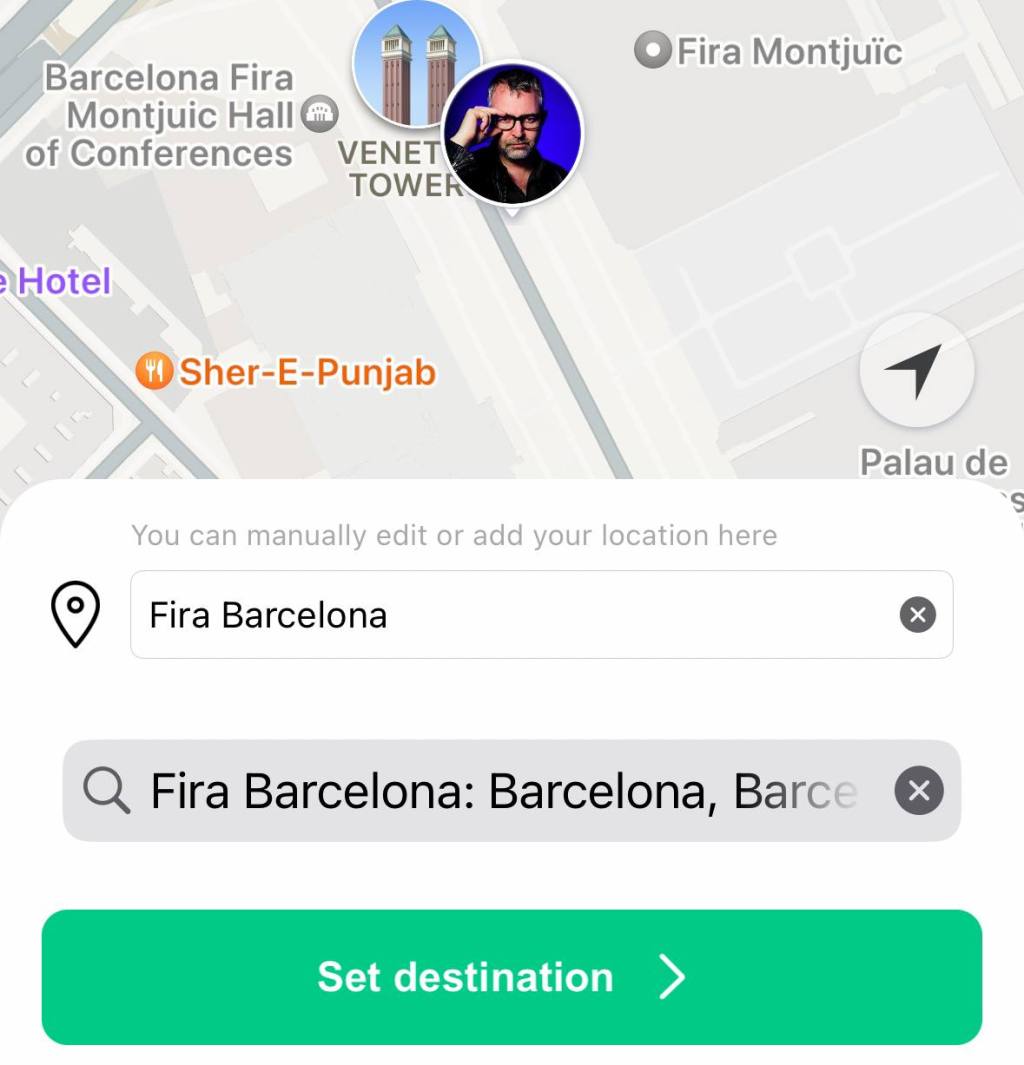
Given that this week Instagram revealed that it was developing a “Friend Map” feature, it was interesting and timely to run into a startup during Mobile World Congress that plans to go beyond even that. Swayy is an iPhone app startup that allows you to share not your current location, but your next intended location. That could be either in a couple of hours in the future, or even weeks or months away.
So why on earth would anyone want to do that?
Well, as founder Daneh Westropp told me, the advantage is that instead of having to “constantly coordinate with your friends via text or phone calls, the app lets your followers know where you’ll be next and allows them to figure out if they can sort of ‘serendipitously co-locate’ with you.”
You can also publish your future location to groups which you curate. That could be just one or two members of your family, a specific set of friends, a group of work colleagues or just the wider public at large, or rather, anyone who’s also on the app (because Swayy doesn’t have a public-web version the whole internet can access).
Again, I asked, why even bother? People coordinate via text messages and shared calendars these days. So what’s the point?
“Swayy allows for more spontaneous outings and creates chance encounters,” claimed Westropp, who previously worked on a dating startup. “You have total control over who can see your future location.”
“Say I want people to know I’ll be in Barcelona for Mobile World Congress. I publish it to Swayy, specify what part of the city I’ll be in mostly, and then my friends can passively see that I’ll be in town. It’s much more fun and exciting to have the possibility of more ‘happy coincidences.’ It could create more spontaneity in life,” she said. She added that right now the app is about getting users on board, ahead of building out some kind of business model, such as advertising venues to meet in.
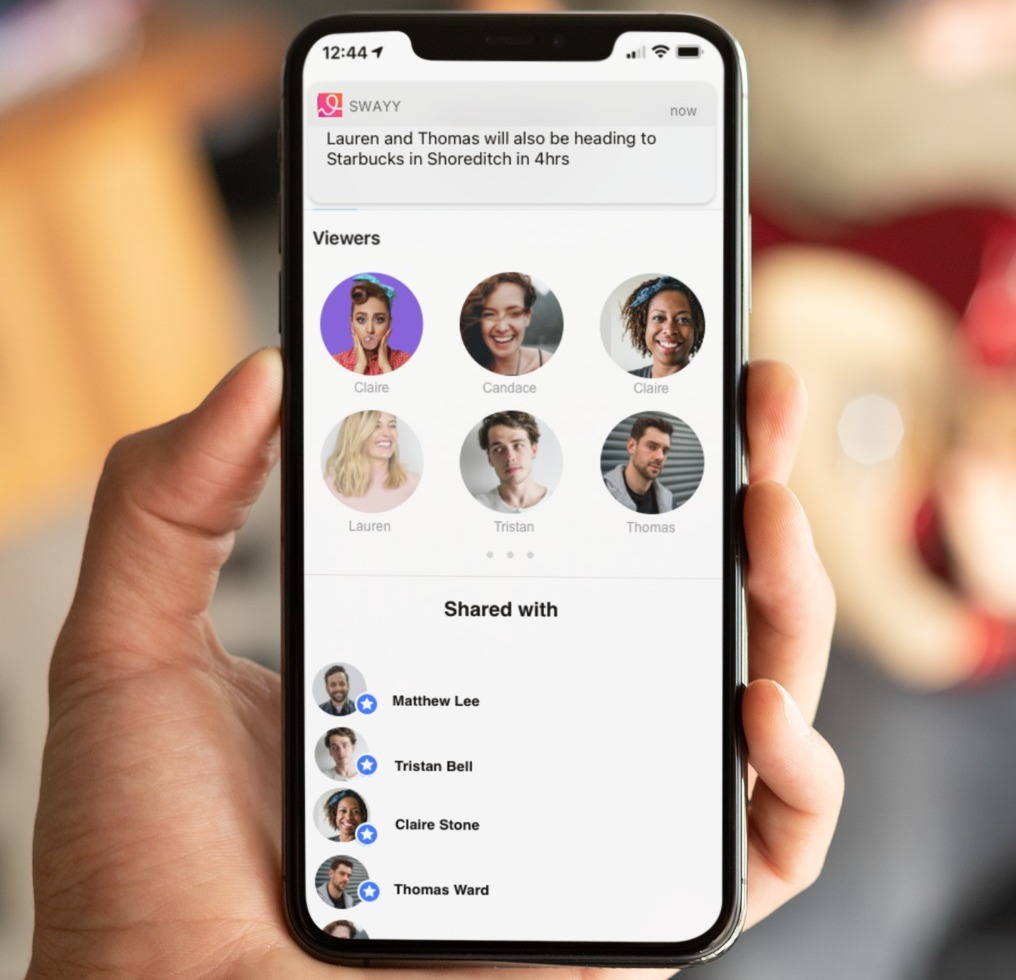
Whether or not you think that’s the case, it’s clear the app has a chicken-and-egg problem. Without more users it can’t create the spontaneity it promises. I managed to coax a few friends onto the app to kick the tires on it, but they were all in London, so my efforts to create chance encounters in Barcelona were pretty limited.
That said, if I could get more friends onto it, and some sort of critical mass, and they did likewise, perhaps we’d all get more chance encounters by sharing where we’d be next? The app generates a sort of news feed of where my friends are going to be in the future, not where they are now, and this is far more useful if I wanted to re-route to their rough location and grab that “usually-hard-to-organize-random-drink.”
In other words, Swayy is an app ideally suited to people in large cities where there’s a critical mass of users who wouldn’t mind bumping into each other more often, for work or play. As Instagram is surely bound to find out, knowing where my friends are right now isn’t really that useful. Because wherever they are, they’d usually have to stay put long enough to allow time for me to get to them, or vice versa. And there’s no obvious “invitation to join.” On Swayy, you can be explicit about whether you’d like others to co-locate with you, or not.
I also liked the way the Swayy app allows me to create custom groups. This gets around the problem of privacy. The ability to publish my next location to just, say, one or two users, or maybe five, or maybe 10 (and upwards), is far better than being either super private or super public.
As Westropp pointed out, as a female founder, she’s acutely aware that being able to control precisely who can see her future location is something she hard-wired into the app.
Furthermore, when a user publishes a “Sway” others in their network can “join” it (if they can “see” the post), and a group chat can be set up for all the people “Swayying” to that location, explained Westropp. A user is also reminded to confirm they are, actually, on their way to where they said they’d be.
Of course, Swayy is likely to struggle against the tech giants already toying with location as a feature. As we found out this week, Instagram’s Friend Map would be more or less a copy of a popular feature from Snapchat and the “Find My” feature on Apple devices. It will also be an opportunity for Instagram to appeal to people who were fans of Zenly, a social map app that Snap acquired and then shut down in 2022.
However, according to the screenshots posted so far, Instagram’s Friend Map would only be visible to a “Close Friends” list or no one at all. It’s very much a blunt on or off switch.
Swayy’s ability to create far more curated lists of users could be its most useful, and privacy-preserving, feature.
